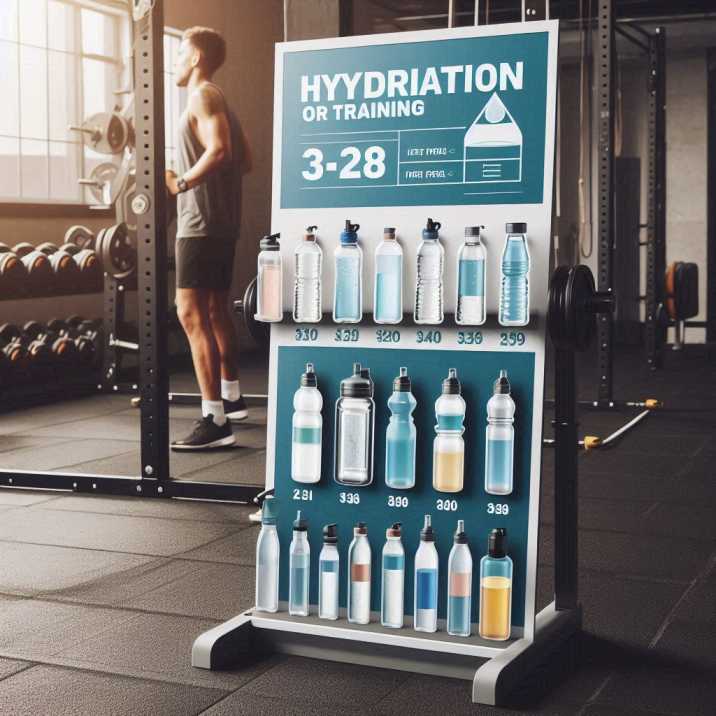Introduction:
Table of Contents
Footwork is the foundation of many sports, from soccer to basketball to football. The ability to move quickly and efficiently can make all the difference between success and failure on the field. One effective tool for enhancing footwork is the agility ladder. In this article, we’ll delve into how agility ladder drills improve footwork and why they are essential for athletes looking to take their game to the next level.

1. Understanding Footwork:
Before diving into the specifics of agility ladder drills, it’s crucial to understand what we mean by footwork. Footwork refers to the movement and positioning of the feet in various athletic activities. It involves agility, coordination, balance, and speed, all of which are essential for peak performance.
The Importance of Footwork:
Good footwork is essential in almost every sport. It allows athletes to change direction quickly, maintain balance, and execute precise movements. Whether you’re dodging defenders on the soccer field or pivoting to take a shot in basketball, footwork is key to success.
Common Footwork Challenges:
Many athletes struggle with poor footwork, which can hinder their performance and increase the risk of injury. Common challenges include slow reaction times, clumsiness, and difficulty maintaining balance during rapid movements.
2. What Are Agility Ladder Drills?
Agility ladder drills are a series of exercises performed using a ladder-shaped mat with evenly spaced rungs. Athletes perform various footwork patterns by stepping in and out of the ladder rungs in different sequences. These drills are designed to improve agility, speed, coordination, and balance.
Benefits of Agility Ladder Drills:
Improved Agility:
Agility ladder drills are specifically designed to challenge athletes to move their feet quickly and accurately through a series of coordinated movements. This rapid footwork demands precise control and responsiveness, which directly translates to improved agility on the field or court. As athletes consistently practice these drills, they develop the ability to change direction swiftly, evade opponents, and execute complex maneuvers with ease. Ultimately, enhanced agility enables athletes to react more effectively to unpredictable situations during gameplay, giving them a competitive edge.
Enhanced Coordination:
The repetitive nature of agility ladder drills serves as a powerful tool for improving coordination between the feet and the brain. Each step through the ladder requires athletes to carefully synchronize their movements, ensuring that their feet land precisely within the designated spaces. Over time, this repetition reinforces neural pathways, enhancing the brain’s ability to communicate with the muscles responsible for executing footwork. As a result, athletes experience smoother, more fluid movements, allowing them to transition seamlessly between different actions such as sprinting, cutting, and pivoting.
Increased Speed:
Agility ladder drills present athletes with a constant challenge to move their feet as quickly as possible while maintaining control and accuracy. By repeatedly pushing the limits of their foot speed, athletes gradually improve their overall speed and acceleration capabilities. As they become more proficient at navigating the ladder with speed and precision, they develop greater explosiveness in their movements, enabling them to cover ground faster and outpace opponents on the field. This newfound speed not only enhances offensive capabilities but also improves defensive reactions, making athletes more effective in both attacking and defending situations.
Better Balance:
Performing agility ladder drills requires athletes to maintain balance and stability while executing intricate footwork patterns. The narrow spacing of the ladder rungs forces athletes to stay centered and grounded, preventing excessive side-to-side movement or loss of equilibrium. As athletes practice balancing on the ladder, they engage core muscles and proprioceptive sensors, which are responsible for detecting changes in body position. Over time, this leads to improved proprioception and kinesthetic awareness, allowing athletes to maintain better control over their bodies during dynamic movements. As a result, they become less prone to stumbling, tripping, or falling during intense gameplay situations, thereby reducing the risk of injury and enhancing overall performance.
3. How Do Agility Ladder Drills Improve Footwork?
Agility ladder drills target specific aspects of footwork, making them an effective tool for athletes looking to enhance their performance. Here’s how these drills improve footwork:
Foot Speed:
Agility ladder drills involve rapid foot movements in various patterns, helping to increase foot speed and reaction time. By repeatedly stepping in and out of the ladder rungs, athletes develop faster and more efficient footwork.
Coordination:
Performing agility ladder drills requires precise coordination between the feet and brain. As athletes practice different patterns and sequences, they improve their ability to coordinate movements and maintain control over their footwork.
Balance and Stability:
The narrow spacing of the ladder rungs challenges athletes to maintain balance and stability while performing drills. This helps improve proprioception—the body’s awareness of its position in space—and reduces the risk of injury during athletic activities.
Agility and Quickness:
Agility ladder drills are designed to mimic the quick, multidirectional movements required in sports. By practicing these drills regularly, athletes can enhance their agility and quickness, enabling them to outmaneuver opponents on the field.
4. Tips for Effective Agility Ladder Training:
To maximize the benefits of agility ladder drills, athletes should follow these tips:
Start Slow:
When beginning agility ladder training, it’s essential to start with simple footwork patterns. This allows athletes to familiarize themselves with the movements and build a solid foundation before progressing to more complex drills. Starting slow also helps prevent injury by allowing athletes to focus on proper technique and form without feeling overwhelmed.
Focus on Form:
Proper technique is crucial for getting the most out of agility ladder drills. Athletes should concentrate on maintaining precise and controlled movements throughout each drill. This includes keeping their knees slightly bent, staying low to the ground, and using quick, light steps to navigate the ladder. By focusing on form, athletes can maximize the effectiveness of their training and reduce the risk of injury.
Stay Light on Your Feet:
Agility ladder drills require athletes to move quickly and efficiently, which means staying light on their feet is essential. Athletes should aim to minimize ground contact time by lifting their feet swiftly off the ground and avoiding any unnecessary dragging or stomping motions. This not only improves agility but also helps develop fast-twitch muscle fibers, leading to quicker, more explosive movements on the field or court.
Be Consistent:
Like any skill, mastering agility ladder drills requires consistent practice. Athletes should incorporate ladder drills into their training routine on a regular basis to maintain and improve their footwork skills over time. Consistency is key to seeing progress, so athletes should aim to dedicate time to agility ladder training at least 2-3 times per week to reap the full benefits.
Stay Hydrated:
Hydration is often overlooked but is crucial for optimal performance during agility ladder training. Athletes should drink plenty of water before, during, and after training sessions to stay hydrated and prevent cramps or fatigue. Proper hydration ensures that athletes can sustain their energy levels and perform at their best throughout their training session, maximizing the effectiveness of their agility ladder drills.

Here’s a table of information summarizing the key points about agility ladder drills:
| Aspect | Description |
|---|---|
| Purpose | Agility ladder drills are designed to improve agility, speed, coordination, balance, and footwork skills. |
| Benefits | – Improved agility – Enhanced coordination – Increased speed – Better balance and stability |
| Targeted Skills | – Foot speed – Coordination – Balance and stability – Agility and quickness |
| Equipment Needed | Agility ladder (portable and affordable) |
| Training Frequency | 2-3 times per week for optimal results. Consistency is key. |
| Suitable for | Athletes of all levels, from beginners to advanced. |
| Tips for Effective Training | – Start slow – Focus on form – Stay light on your feet – Be consistent – Stay hydrated |
| Sports Benefited | Soccer, basketball, football, tennis, and more. Any sport requiring quick, precise footwork can benefit from agility ladder training. |
| Injury Prevention | Improves balance, stability, and proprioception, reducing the risk of injury during athletic activities. |
This table provides a quick overview of the main points covered in the article about agility ladder drills and their benefits for improving footwork.
Conclusion:
Agility ladder drills are a valuable tool for athletes looking to improve their footwork and performance on the field. By targeting specific aspects of agility, coordination, balance, and speed, these drills can help athletes develop the skills they need to excel in their sport. Incorporate agility ladder training into your routine and watch your footwork—and your game—reach new heights.
Frequently Asked Questions (FAQs):
Q1. What sports benefit most from agility ladder drills?
A1. Agility ladder drills are beneficial for a wide range of sports, including soccer, basketball, football, tennis, and more. Any sport that requires quick, precise footwork can benefit from agility ladder training.
Q2. Can agility ladder drills help prevent injuries?
A2. Yes, agility ladder drills can help improve balance, stability, and proprioception, which can reduce the risk of injury during athletic activities.
Q3. How often should I incorporate agility ladder drills into my training routine?
A3. It’s recommended to incorporate agility ladder drills into your training routine 2-3 times per week for optimal results. However, consistency is key, so aim to practice regularly.
Q4. Do I need any special equipment to perform agility ladder drills?
A4. All you need is an agility ladder, which is affordable and portable, making it easy to incorporate into your training routine at home or on the go.
Q5. Can beginners benefit from agility ladder drills, or are they more suited to advanced athletes?
A5. Agility ladder drills can benefit athletes of all levels, from beginners to advanced. Start with simple drills and gradually increase the difficulty as you improve your skills.


